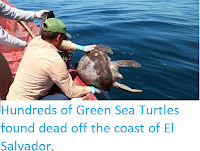Slider Turtles, Trachemys spp., are Freshwater Turtles found across the Americas from the Great Lakes Region of North America, through Central America and the islands of the Caribbean, and in South America as far south as the R ıo de la Plata region of Argentina. Two species are currently found in South America, Trachemys dorbigni, which has two subspecies, one found in Brazil and one in Argentina, and Trachemys venusta, with five subspecies, one each from Colombia and Venezuela, as well as three from Central America. Genetic studies of these South American Slider Turtles which have used molecular clock methodologies to date their divergence from their closest relatives suggest that the South American subspecies of Trachemys venusta diverged from the Central American members of the species between 2.0 and 2.5 million years ago, around the time when the modern Central American land-bridge was established, making the invasion of South America by this species part of the Great American Biotic Interchange, while Trachemys dorbigni diverged from its closest relatives between 8.6 and 7.1 million years ago, which coincides with the presence of an earlier, Late Miocene, land-bridge between North and South America.
In a paper published in the Journal of Zoological Systematics and Evolutionary Research on 6 October 2017, Mario Vargas-Ramírez of the Grupo Biodiversidad y Conservaci on Gen etica at the Universidad Nacional de Colombia, and the Senckenberg Museum of Zoology, Carlos del Valle, also of the Grupo Biodiversidad y Conservaci on Gen etica at the Universidad Nacional de Colombia, Claudia Ceballos of the Escuela de Medicina Veterinaria at the Universidad de Antioquia, and Uwe Fritz, also of the Senckenberg Museum of Zoology, describe a new species of Slider Turtle from the lower Atrato River Basin of northwestern Colombia.
The new species is named Trachemys medemi, in honour of Federico Medem (1912–1984) (born Count Friedrich Johann von Medem in Remten, Latvia), who discovered the population from which this species is described, for his contributions to the study of Herpetology in Colombia. The species is described from four males, with carapaces measuring 16.1–19.8 cm in length and 11.5–14.3 cm in width, and a single female with a carapace measuring 22.7 cm in length and 17.7 cm in width. These Turtles are dark grey or olive in colour, with orange-rimmed ocelli (eyespots) on the outer parts of the shell; the overall colour and pattern of ocelli varies from individual to individual, but this does not appear to be related to sex.
Trachemys medemi, adult female, Ci énaga de Marriaga, Ungu ía, Chocó, Colombia. Carlos del Valle in Vargas-Ramírez et al. (2017).
A genetic analysis of the new species suggests that it is the sister species to Trachemys dorbigni, and like that species to have diverged from its nearest non-South American relatives 7.1-8.6 million years ago, suggesting that this species is also the descendant of Turtles that crossed the Late Miocene American Land-bridge.
Vargas-Ramírez et al. note that there are populations of Trachemys medemi within the Natural Park Los Katíos and the National Protected Forest Reserve R ío Léon, where they should receive good protection, however populations outside these reserves are vulnerable to habitat loss and forests are cleared to make new pasture, as well as illegal harvesting as a foodstuff, particularly around Holy Week (the week before Easter), when large numbers of Turtles are traditionally eaten in Colombia. For this reason they recommend that Trachemys medemi is classified as Trachemys medemi Vulnerable under the terms of the International Union for the Conservation of Nature's Red List of Threatened Species.
See also...
Follow
Sciency Thoughts on Facebook.







